ROOM: The Space magazine is one of the prominent magazines on space exploration, technology and industry. At ROOM, we share a common dream – advancement of peaceful space exploration for the benefit of humankind, all while bringing you fascinating articles on an array of contemporary topics. Our authors include researchers and industry leaders from all over the world, which lets us bring you the newest and accurate information about kepler 452b exoplanet.
 October 2015
Finding Earth-like worlds: the tale of how Kepler-452b was discovered
October 2015
Finding Earth-like worlds: the tale of how Kepler-452b was discovered
...tectonics, or has simple or complex life. So we really can’t tell whether this or, indeed, any other exoplanet discovered to date is really “earth-like” in the sense of having plant and animal life. That’s ...bigger and brighter. The size of the orbit of Kepler-452b is nearly the same as that of the Earth at 1.05 AU. Kepler-452b orbits its star once every 385 days. Nevertheless, what makes Kepler-452b so charming is that it’s the closest analogue we...
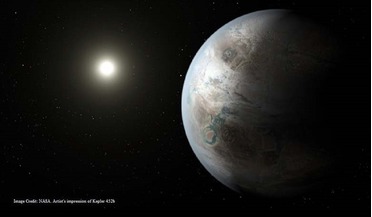 27 July 2015
Debating Kepler 452b, Yuri Milner, and the search for intelligent life
27 July 2015
Debating Kepler 452b, Yuri Milner, and the search for intelligent life
... Earth making contact with intelligent life. A potentially “Earth-like” planet out there, which is what Kepler 452b is alleged to be, will obviously generate a more-than-usual amount of discussion on the possibility of ... like a particularly naive gesture – or does it? We’ve already written about how the real power of the Kepler 452b discovery is largely symbolic for humanity – an opportunity for self-reflection. It also gives us a chance to...
 April 2019
Scanning the skies for exoplanets
April 2019
Scanning the skies for exoplanets
...that will be 400 times larger than that covered by Kepler. Like Kepler, TESS will search for exoplanets by detecting the fractional dip in a star’s brightness as an orbiting exoplanet passes by, a technique known as the transit method.... their host stars in 13 days or less; these are considered short orbital period exoplanets. Conversely, Kepler was adept at finding exoplanets with orbital periods from 10 days up to a few hundred days, a feature ...
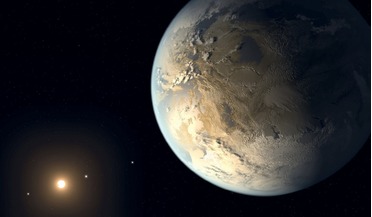 August 2018
Exoplanet census promises radical discoveries
August 2018
Exoplanet census promises radical discoveries
... police radar guns to detect speeding cars. Figure 1: The sensitivity regions of the Kepler transit survey (in red) and the WFIRST exoplanet microlensing survey (in blue) are compared to the orbits of the planets in our ... planet or star in systems with more than one host star. The combination of the WFIRST exoplanet microlensing survey and Kepler’s transit survey will provide a complete statistical census of planets at all separations. This is the...
 November 2018
How many people does it take to colonise an exoplanet?
November 2018
How many people does it take to colonise an exoplanet?
... Located at 4.2 light years (40,000 billion km), Proxima Centauri b is almost an ideal destination - as far as exoplanets go. But while this distance may be small by astronomical standards, it remains utterly vast on the human scale. The...not a strict, definitive number for colonisation projects. Artist’s concept of the surface of TRAPPIST-1f, an exoplanet about 40 light years from Earth. Cows in space? Sending a ship laden with frozen embryos ...
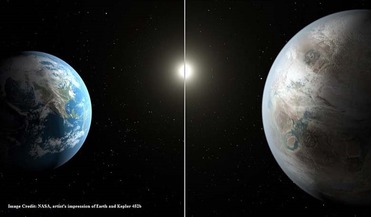 23 July 2015
Exoplanet Kepler 452b and what the search for a real life “Another Earth” means for human self-perception
23 July 2015
Exoplanet Kepler 452b and what the search for a real life “Another Earth” means for human self-perception
The most Earth-like exoplanet yet may have a lot to teach us…about ourselves. Kepler 452b, discovered by the Kepler Telescope, is located in our own galaxy, the Milky Way. In terms of the vastness of space, it is relatively “close” –...in order to sustain it, a planet must have water on its surface – and Kepler 452b may very well have that. Crucially, Kepler 452b has spent billions of years orbiting within a so-called habitable zone around its star...
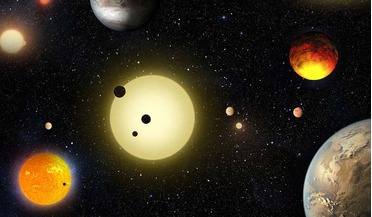 11 May 2016
Kepler scientists announce a major increase in confirmed exoplanet numbers
11 May 2016
Kepler scientists announce a major increase in confirmed exoplanet numbers
...24hrs a day, 7 days a week, 365 days a year looking for the tell-tale sign of a would be exoplanet. The technique Kepler uses is known as the transit method and it works by measuring the dip in star light as a planet passes... has been imperative to find a quicker solution and narrow down the search for true exoplanet signals. Batalha explains that Kepler achieves this by using statistics to sample the Galaxy to help understand how many planets ...
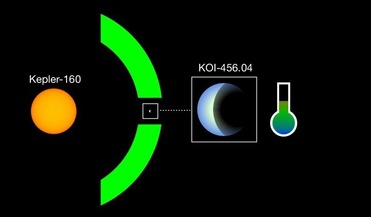 05 June 2020
Exciting exoplanet find around sun-like star
05 June 2020
Exciting exoplanet find around sun-like star
... worlds, detections of rocky worlds around Sun-like stars is comparatively rare, due to the techniques used to find exoplanets. But by improving on an old detection method, a team of German and US scientists have now found a ... not new. It was discovered around ten years ago, followed by the confirmation of two exoplanets, called Kepler-160b and Kepler-160c, four years later. Both of these planets though are substantially bigger than Earth and...
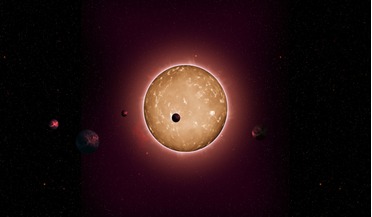 24 November 2021
Astronomers discover more than 350 possible new exoplanets
24 November 2021
Astronomers discover more than 350 possible new exoplanets
...around smaller, dimmer red dwarf stars instead. Dubbed K2, this “Second Light" mission lasted as long as Kepler’s first exoplanet hunt and bumped its count of surveyed stars up to more than 500,000. But, after nine ... of data about once per month – is still being examined for signs of potential habitable exoplanets. However, because of the problems Kepler experienced, scientists have not been able to use the same automated processes used to find...